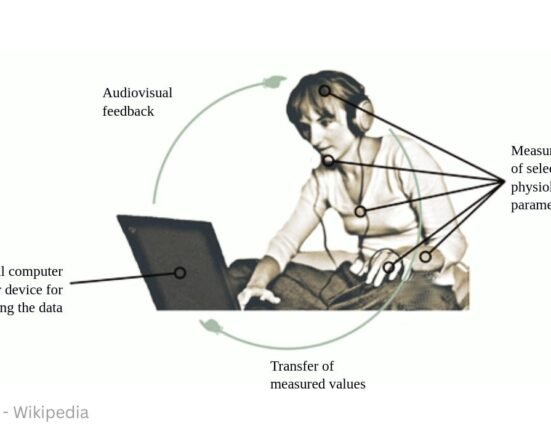Therapy experienced a change in tone after the pandemic; the COVID-19 pandemic dramatically accelerated the adoption of remote mental health care. Text-based therapy – counselling via asynchronous messaging has grown alongside video/phone teletherapy. But is there a difference between digital (text) therapy and traditional in-person therapy across individual and couples/family settings, considering all ages (teens, adults, seniors) and multiple dimensions: clinical efficacy, satisfaction, access, privacy, alliance, and cost? It is essential to focus on post-2020 evidence (telehealth boom) while noting key pre-2020 findings for the context of this rising digital (text) therapy trend.
Clinical Effectiveness
Individual Therapy – Post-2020:
Recent randomised trials and meta-analyses show no significant differences in outcomes between remote and in-person care. A 2021 meta-analysis found video-based therapy yielded large improvements in anxiety/depression and was “no less efficacious” than face-to-face psychotherapy. In a 2023 RCT (randomised controlled trial) of moderate depression, asynchronous message-based therapy produced medium–to–large symptom reductions and was noninferior to weekly video therapy. Both conditions saw similar drops in depression, anxiety, and functional impairment, and no significant differences in treatment credibility or therapeutic alliance. These findings suggest that message/chat therapy can match traditional weekly therapy in clinical effect.
Individual Therapy – Pre-2020:
Earlier studies also support teletherapy. Systematic reviews before COVID found telehealth (video or phone) and in-person CBT produce similar symptom reductions. For example, one JMIR review of “less common” mental disorders found no significant differences in symptom severity, functioning, satisfaction or alliance between telehealth and face-to-face delivery. In sum, both before and after 2020, evidence indicates remote therapy (video/chat) is as effective as in-person for a range of mental health issues, from depression and anxiety to relationship distress.

Couples/Family Therapy:
Though fewer studies exist, emerging data suggest online couple therapy works. A recent RCT (60 adults) compared a behavioural couple’s program via videoconference vs. in-person. Both groups showed significant gains in relationship satisfaction and mental health, with no difference between delivery modes, and alliance improved similarly in both. Likewise, systematic reviews of systemic therapies (couples/family) report mixed results but overall equivalence.
In one review of 4 trials (N=754), about 92% of outcomes showed no difference between digital vs. face-to-face family therapy, with only minor advantages for each in a few measures. Thus, digital delivery is a viable alternative for couples/family therapy, expanding access for those who otherwise couldn’t attend sessions together.
Youth (Teens and Young Adults):
Adolescents often adapt well to text. A 2023 scoping review of text-based therapy for youths (synchronous text chat interventions) found that all included trials reported symptom improvements (depression, anxiety) and high usability. The review noted “high potential” of text counselling for teens and young adults, though many studies were uncontrolled or combined modalities. Generally, digital interventions (apps, text, teletherapy) have achieved significant reductions in youth anxiety and depression during COVID, with medium effects for anxiety and large for depression. In-person vs. virtual comparisons in youth CBT similarly show no loss of efficacy.
Older Adults (Seniors):
There were concerns that seniors might struggle with tech, but evidence suggests they benefit equally from teletherapy. A 2022 study (N≈12,900) found that older adults using a telehealth psychiatry platform had identical reductions in depression severity over time as matched younger adults. Moreover, seniors frequently use basic texting: one report notes 94% of adults 65+ engage with text messaging weekly. Supportive text programs (e.g. Text4Hope) report that ~80–88% of participants (adults of mixed ages) welcome daily messages for follow-up, often preferring text over video. Thus, older clients can and do engage in remote care successfully.
User Satisfaction
Convenience and Preference:
Across demographics, many users appreciate the convenience of text/video therapy. Surveys of online platform clients (e.g., Talkspace users) found that most rated text therapy equal to or superior to in-person therapy on convenience, access, and perceived effectiveness. During COVID, patients report high satisfaction with virtual sessions, and therapists note fewer cancellations due to travel issues.
In one large aftercare RCT (randomised controlled trial), patients in the online group were significantly more satisfied with treatment than the in-person group. Teens, accustomed to digital communication, often find online/phone therapy more approachable (reduced stigma). Conversely, some users (or therapists) may initially miss face-to-face contact; still, no major drop in patient satisfaction is evident in the literature.

Therapeutic Relationship Quality:
Most studies show equivalent therapeutic alliance ratings between remote and in-person care. For example, the depression RCT found no difference in alliance between message-based and video therapy. The couple’s video RCT also found alliance scores improved equally over time in both telehealth and in-person groups. A meta-review reports patients’ “equal satisfaction and experience of alliance” with teletherapy vs. face-to-face.
However, one pre-COVID survey of text-only clients noted slightly lower alliance ratings than in-person (though still positive), even as satisfaction and outcome ratings were high. Overall, it appears strong rapport can be built remotely, though therapists often need extra effort to convey empathy without nonverbal cues.
Demographic Differences:
Teens and young adults generally report high usability of digital therapy and have few barriers to texting or video calls. One review noted youth’s familiarity with phones contributes to text therapy being “easy to use, helpful, [and] convenient”. Older adults vary, while many adapt well, some may struggle with technology, preferring the telephone or simple apps. Importantly, though uptake was slower historically, data show no age gap in basic texting use. Clinicians’ attitudes also shifted: surveys of therapists during the pandemic found many recognised virtual therapies to be satisfactory for clients, though some remained concerned about alliance or tech issues.
Accessibility
Geographic/Logistical Access:
Remote therapy vastly expands access. Telehealth eliminates travel and scheduling barriers, benefiting rural or mobility-challenged clients. A scoping review notes e-mental health can fill “important service gaps” where few therapists exist, and text therapy’s anonymity helps overcome stigma-related barriers. The Depression RCT authors observe that telehealth “can reach places where traditional mental health services are scarce” and imposes “less financial burden” on patients. Couples with scheduling conflicts or childcare issues also gain access via online sessions (video conferencing eliminates the need for simultaneous commuting).
Scheduling Flexibility:
Text-based therapy (asynchronous) offers especially high flexibility. Clients can send messages at any time, which is valuable for those with erratic schedules or in crisis outside clinic hours. Many platforms allow 24/7 messaging, unlike fixed weekly sessions. In a COVID context, as psychologists’ telehealth use jumped from 7% to 85%, patients found teletherapy easier to attend from home. Dropout rates in teletherapy tend to match or even undercut in-person care; one large trial found no difference in attrition between online vs. face-to-face groups, and better adherence overall for remote interventions.

Cost and Resources:
Teletherapy often reduces costs. Clients save on travel time/cost and can access providers across regions (potentially lowering fees via market competition). One systematic review reported video therapy as less expensive than face-to-face care. Digital platforms sometimes charge subscription models that can be cheaper per session than traditional billing. Therapists also save on office overhead. Overall, lower patient cost and wider reach suggest teletherapy improves equity of access.
Read More: How to Negotiate your Therapy Rate?
Privacy and Confidentiality
Remote (Text/Tele) Therapy:
Digital modes introduce new privacy considerations. Secure platforms must encrypt messages and comply with regulations (HIPAA, etc.). Clients appreciate that online sessions can feel more anonymous (they stay in their own space, sometimes even masked on video). However, potential cons include data breaches, therapists seeing into clients’ homes inadvertently, or distractions. Many teletherapy services now use dedicated apps with end-to-end encryption to mitigate risks. Therapist guidelines emphasise informed consent and digital confidentiality protocols (e.g. verifying client location at each session).
Face-to-Face Therapy:
In-person sessions avoid digital security risks, but privacy depends on the setting (soundproofing, waiting rooms). Some rural clients, for instance, worry about community stigma if they visit a local therapist. In contrast, a client can discreetly text a provider from home. Both modalities require trust: digital privacy hinges on technology safeguards, while in-person privacy relies on professional ethics and physical confidentiality. No major studies show systematic harms, but privacy remains a key consideration when choosing modalities.
Therapeutic Alliance
A strong alliance (empathy, trust) is central to therapy success. Recent evidence indicates text/teletherapy can cultivate an alliance comparable to in-person therapy, though via different channels:
Text-Based Alliance:
A scoping review of text-based digital psychotherapy (23 studies) found that clients consistently report good alliance scores (weighted mean ~5.66/7 on the Working Alliance Inventory). The review concludes that “a good therapeutic alliance can be established… through text-based communication,” and alliance relates positively to outcomes as in in-person care. Clients often describe the ability to reflect before typing as helpful for expression. Limitations include loss of nonverbal cues; therapists compensate with a clear tone and frequent check-ins.
Video/Phone Alliance:
Video conferencing preserves more interpersonal cues than text. The couple’s RCT found alliance improved equally in video and face-to-face groups. Meta-analyses note negligible differences in alliance ratings between live teletherapy and in-person therapy. Some therapists initially doubted their ability to form rapport online, but client feedback is generally positive. Many patients feel “heard” and satisfied even without physical presence, suggesting flexibility in how alliance is built.
In summary, both modalities can achieve a strong alliance. Slight differences (e.g. some text clients rating alliance a bit lower) do not appear to affect outcomes significantly. The emphasis shifts face-to-face relies on body language, whereas text therapy relies on clarity of writing and prompt responses.
Cost
Face-to-Face Costs:
Traditional therapy incurs costs of office space, commuting time, parking, and possibly higher per-session fees. Insurance coverage varies; some couples/family therapy is often not covered at all. For clients in remote areas or on low incomes, attending regular sessions can be financially burdensome.
Text/Teletherapy Costs:
Many telehealth services advertise lower costs or subscription models. Clients save on travel and time (thus indirect costs). For example, the Depression RCT notes telehealth “put[s] a less financial burden on patients”. Likewise, analysts have reported video sessions being less costly than equivalent in-person ones. Therapist time per session may be similar, but overhead is lower. On the provider side, counsellors can serve more clients with fewer facilities, potentially passing on savings. However, costs vary by region and platform, and not all insurance fully reimburses teletherapy yet.
Overall Comparison and Effectiveness
Taking all factors together, digital counselling is largely comparable to in-person therapy for both individuals and couples/families. Clinical trials consistently find no worse outcomes online and indeed highlight many advantages in accessibility and satisfaction. Key differences remain in communication style and logistical issues: texting omits face cues, while face-to-face omits textual convenience. For families, evidence suggests digital modalities (especially video) can effectively deliver systemic therapies.
In evaluating “can digital match traditional sessions,” the evidence leans yes for efficacy and patient satisfaction, provided issues like technology access and training are addressed. The therapeutic alliance, while perceived differently, can be strong in both settings. Notably, the pandemic-driven research has largely reinforced preexisting findings: remote therapy works well when well-executed, and many clients prefer its flexibility. Further research is ongoing, but current high-quality studies support digital counselling as an effective and often more accessible alternative to in-person care.
Conclusion
The rise of telehealth (accelerated by COVID-19) has yielded robust evidence that text-based and other remote therapies match the effectiveness of in-person therapy across ages and settings. Both modalities have unique benefits and challenges. Text therapy excels in convenience and anonymity, which can improve reach and client comfort, while in-person therapy offers richer communication cues. For couples and families, video therapy delivers comparable relational and mental health gains to in-person therapy. Overall, mental health care is becoming more hybrid: a blend of digital and face-to-face approaches tailored to client needs. Clinicians and policymakers should leverage both to maximise effectiveness, satisfaction, and access, as supported by recent research.
FAQs
1. What is text therapy?
Text therapy, also known as text counselling, is a form of mental health counselling where individuals connect with a licensed therapist through secure, encrypted messaging platforms. It allows for asynchronous communication, where clients can send messages and therapists respond at their convenience, making it accessible and flexible.
2. How does text therapy work?
Text therapy involves connecting with a licensed therapist through secure messaging platforms to discuss mental health concerns, offering a flexible and accessible alternative to traditional therapy. It allows for both real-time chat sessions and asynchronous messaging, where individuals can send messages and receive responses later.
3. How does online therapy work?
Online therapy, also known as teletherapy or e-counselling, involves conducting therapy sessions remotely using the internet. It’s a way to access mental health support from the comfort of your home, typically through video calls, phone conversations, or text messages. The core process remains similar to in-person therapy, with sessions focused on assessment, goal setting, and providing therapeutic interventions.
4. Why is online therapy good?
Online therapy offers several advantages, including increased accessibility, convenience, affordability, and flexibility, making it a viable and effective alternative to traditional in-person therapy. It can also be particularly beneficial for individuals in remote areas or those with mobility limitations. Additionally, online therapy can provide a more approachable and less intimidating environment for some, giving a greater sense of comfort and allowing for more open communication.
References +
- Batastini, A. B., Paprzycki, P., Jones, A. C., & MacLean, N. (2021). Are videoconferenced mental and behavioral health services just as good as in-person? A meta-analysis of a fast-growing practice. Psychology Services, 18(4), 593–599. https://doi.org/10.1037/ser0000360
- Hull, T. D., & Mahan, K. (2021). A randomized controlled trial of a text-based coaching intervention for depression. Journal of Technology in Behavioral Science, 6(3), 342–352.https://doi.org/10.1007/s41347-021-00184-4
- Hammersley, D., Donnan, J., Astin, F., & Johnson, M. (2022). Telehealth versus face to-face psychotherapy for less common mental health conditions: Systematic review and meta-analysis of randomized controlled trials. ResearchGate. https://www.researchgate.net/publication/359185548
- Torous, J., Myrick, K. J., Rauseo-Ricupero, N., & Firth, J. (2020). Digital mental health and COVID-19: Using technology today to accelerate the curve on access and quality tomorrow. JMIR Mental Health, 7(3), e18848. https://mental.jmir.org/2020/3/e18848
- APA Services. (2020). Telehealth guidance by state during COVID-19 https://www.apaservices.org/practice/clinic/covid-19-telehealth-state-summary
- Poletti, B., Tagini, S., Brugnera, A., Parolin, L., Pievani, L., Ferrucci, R., … & Silani, V. (2021). Telepsychotherapy: A leaflet for psychotherapists in the age of COVID-19. Clinical Neuropsychiatry, 18(1), 73–79. https://pubmed.ncbi.nlm.nih.gov/33551009
- BetterHelp & Talkspace User Studies (Self-reported satisfaction summaries, 2020–2022) https://www.talkspace.com/blog/mental-health-resources/https://www.betterhelp.com/about/













Leave feedback about this